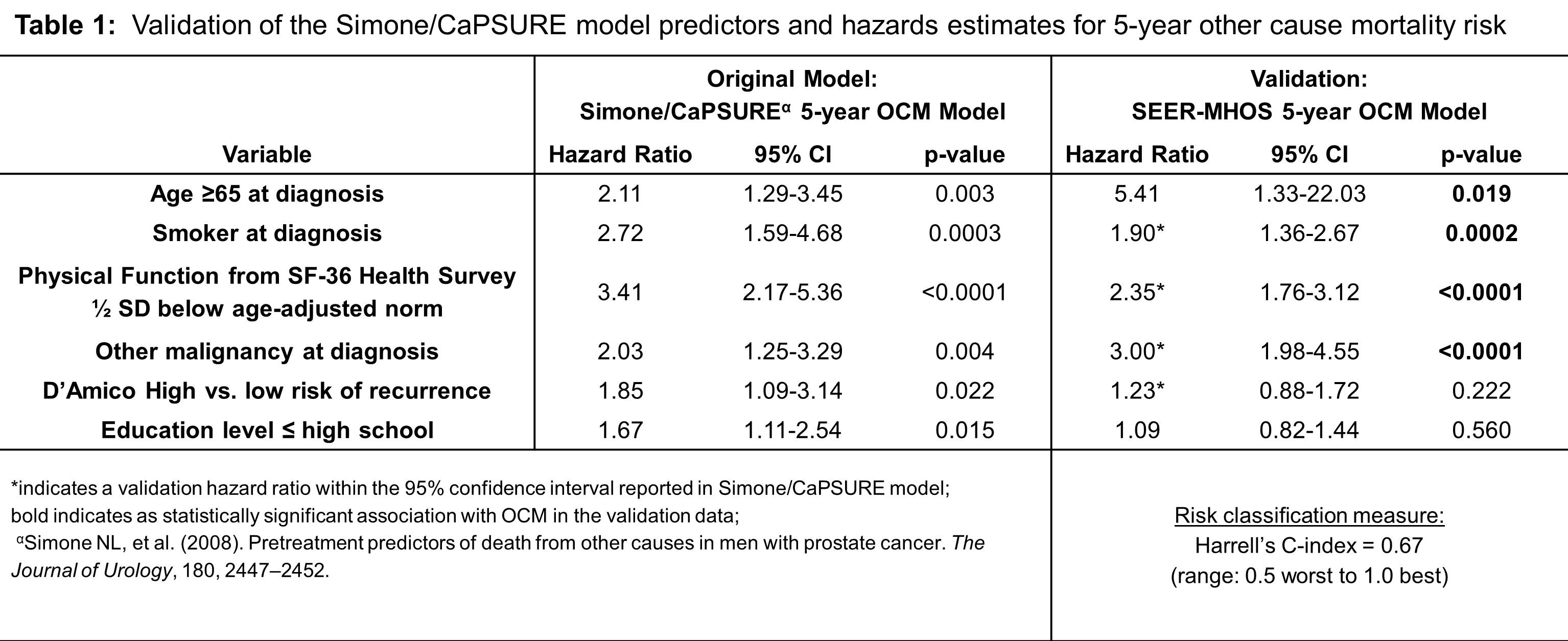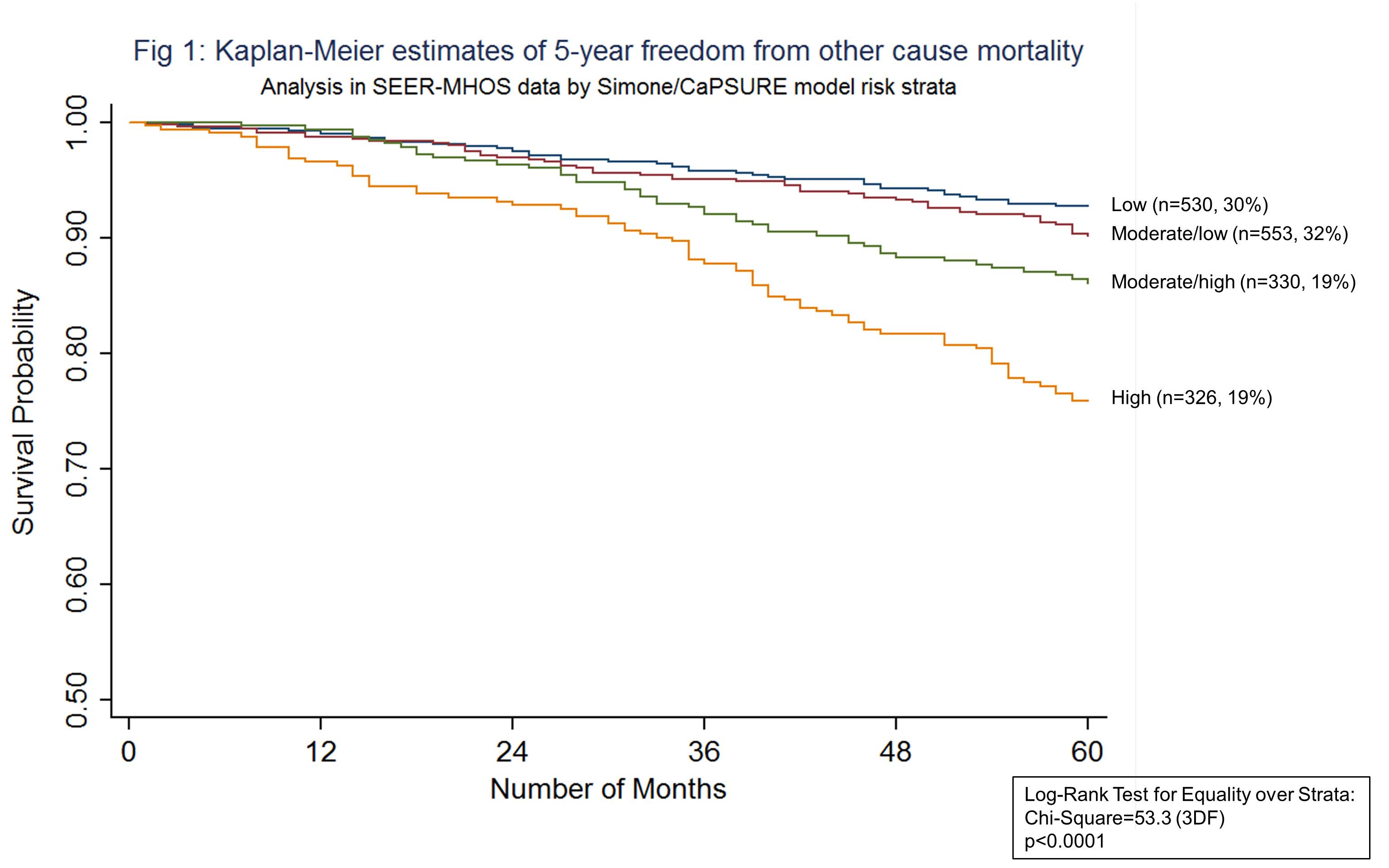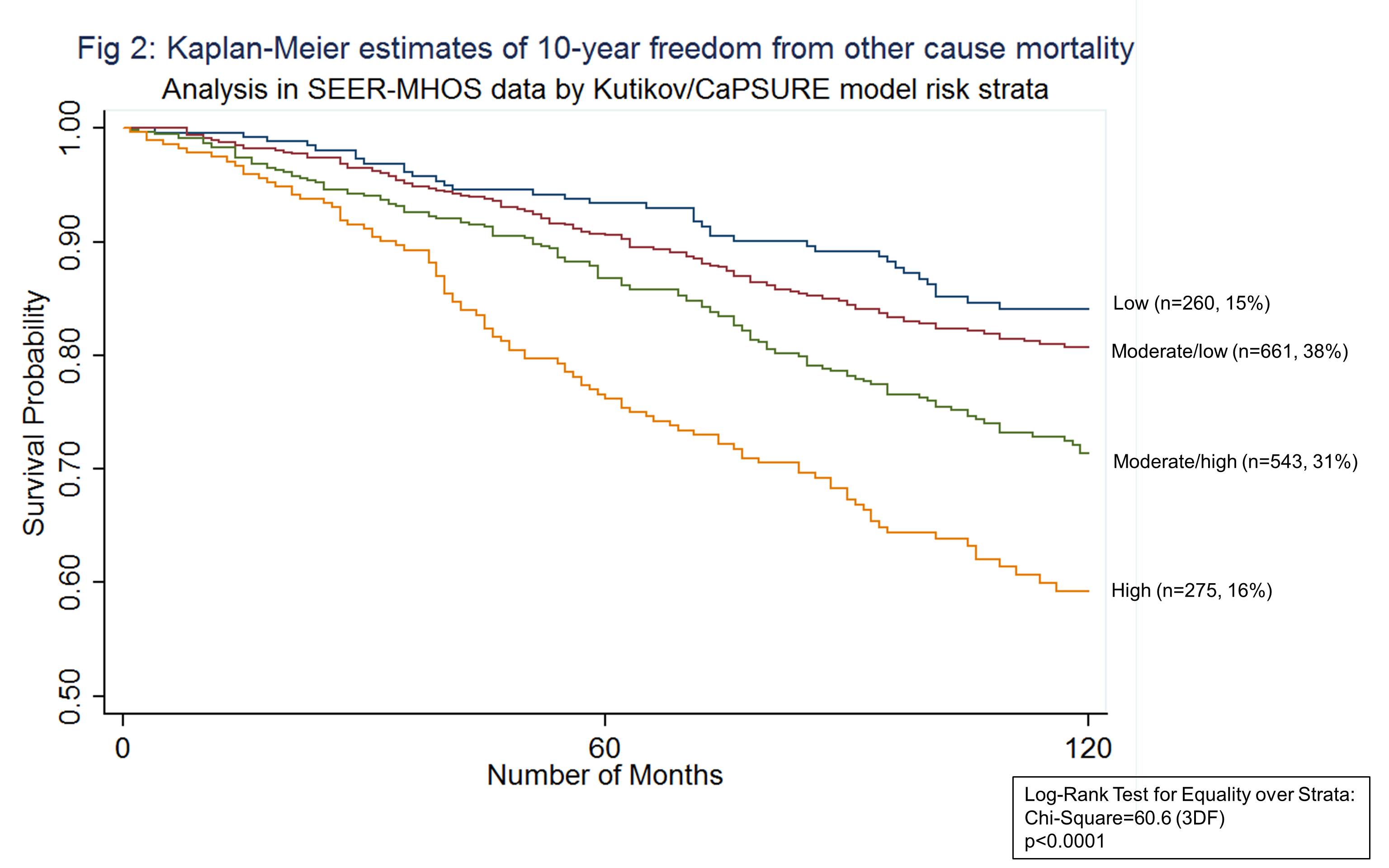|
Back to 2014 Annual Meeting Abstracts
External Validation of 5 and 10-year Prediction Models for Other Cause Mortality in Men Newly Diagnosed with Prostate Cancer
Daniel M. Frendl, MS, Mara M. Epstein, ScD, Jennifer K. Yates, MD, Robert D. Blute, Jr., MD, John E. Ware, Jr., PhD.
University of Massachusetts Medical School, Worcester, MA, USA.
INTRODUCTION: Most men diagnosed with localized prostate cancer die of other causes. Accurate prediction of other cause mortality (OCM) risk may help to better identify patients who are most likely to benefit from aggressive treatment. Two models have been developed in the Cancer of the Prostate Strategic Urologic Research Endeavor (CaPSURE) database for predicting the 5 and 10-year risks of OCM, respectively. We provide the first external validation of the performance of these models.
METHODS: Using the National Cancer Institute’s linked Surveillance Epidemiology and End Results (SEER) and Medicare Health Outcomes Survey (MHOS) databases, we identified men with newly diagnosed, clinically localized, prostate cancer from 1998-2009. We replicated variables which were significant predictors of OCM from the two published CaPSURE models (Tables 1& 2), which we fitted in Cox proportional hazards regression models with 5 and 10-year OCM as the outcome, respectively. To evaluate whether the models accurately classified patients’ risk of OCM, we calculated Harrell’s C-index and plotted Kaplan-Meier survival curves for strata of CaPSURE model predicted risk.
RESULTS: We identified 1,739 patients in SEER with cT1a-cT3a prostate adenocarcinoma and baseline data from the MHOS database. All treated and untreated patients were included. Median follow-up was 9 years. Over 5 and 10-year follow-ups, 215 (12%) and 392 (23%) men died of other causes, respectively. Of the CaPSURE 5-year OCM model variables, age at diagnosis, smoking status, patient-reported physical function, and the presence of other malignances remained significant predictors. Of the 10-year CaPSURE OCM model variables, age at diagnosis and comorbidity count remained significant predictors. The hazards ratios associated with these variables in the SEER-MHOS data are presented in Tables 1&2, compared against the published CaPSURE hazards ratios. Survival curves demonstrated good separation of high vs. low risk groups but poorer separation of low vs. moderate risk groups (Figures 1&2). For both models fitted in the SEER-MHOS data, we observed suboptimal performance for risk classification (C=0.67, 0.63 for 5 and 10-year models, respectively).
CONCLUSIONS: The CaPSURE models largely selected generalizable and valid predictors of 5 and 10-year OCM risk. Overall, however, these models may not classify patients’ risk of OCM accurately enough, particularly between low to moderate risk groups, to make reliable clinical predictions for 5 and 10-year OCM risk. To improve the accuracy of classifying OCM risk, future work should identify a set of predictors that more completely explain the variability in OCM rates.
 
 
Back to 2014 Annual Meeting Abstracts
|

|

